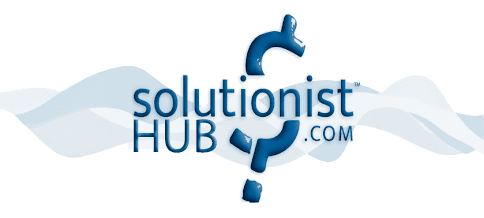Imagine your website as a grand library. In traditional SEO, we focus on ensuring that this library is well-organized, with every book (or webpage) properly indexed and easily accessible. This not only helps visitors find what they need effortlessly but also ensures that search engines recognize and value the structure and content of your site. Let’s delve into the critical components of traditional SEO:
Keyword Research
Think of keyword research as finding the golden keys to unlock the doors of opportunity. These keys are the phrases and terms potential customers use to find businesses like yours. It’s not just about selecting popular keywords but understanding the intent behind them. Imagine knowing exactly what your customers are thinking and searching for—this is the power of effective keyword research.
Significance: Keywords are the primary means through which search engines understand what your content is about. Selecting the right keywords ensures that your content appears in search results when users are looking for the services or products you offer.
Best Practices:
- Use Tools: Utilize tools like Google Keyword Planner, Ahrefs, and SEMrush to identify high-traffic, low-competition keywords. These tools are like treasure maps guiding you to hidden gems that can drive traffic to your site.
- Long-Tail Keywords: Focus on long-tail keywords, which are more specific and less competitive. These often convert better as they match user intent more closely. For example, instead of targeting “shoes,” you might target “comfortable running shoes for women.”
- Competitor Analysis: Analyze your competitors to find out which keywords they are ranking for and identify gaps that you can fill. Think of this as peeking into your competitor’s playbook and devising a strategy to outperform them.
Common Sore Points:
- Overwhelm: Many business owners find keyword research overwhelming due to the sheer volume of data.
- Misalignment: Choosing keywords that don’t align with your business goals can lead to irrelevant traffic.
Expert Insights:
- Google’s Guidelines: Google advises focusing on creating content that provides value and addresses user intent rather than simply trying to rank for a keyword. Think of it as writing a book that your audience wants to read.
- Neil Patel: Emphasizes the importance of understanding the intent behind keywords and creating comprehensive content that answers all potential questions related to the keyword.
On-Page SEO
On-page SEO ensures that each page on your website is optimized for both search engines and users. Imagine each page as a chapter in your book. It should be well-structured, engaging, and easy to read, guiding the reader through the content seamlessly.
Significance: On-page SEO helps search engines understand the context and relevance of your content. It also improves user experience, which can lead to higher engagement rates and better rankings.
Best Practices:
- Title Tags and Meta Descriptions: These elements provide a brief summary of your page’s content and are the first things users see in search engine results. Ensure they are compelling and include your primary keywords. Think of them as the catchy title and blurb on a book cover that entice readers to pick it up.
- Header Tags (H1, H2, H3, etc.): These tags help structure your content, making it easier for search engines to understand the hierarchy and importance of the information. Use them to break down your content into digestible sections, like well-organized chapters and subchapters in a book.
- Content Optimization: Integrate keywords naturally within your content, while maintaining readability and providing value. This includes using synonyms and related terms to create a rich and informative piece. Imagine writing a story that flows beautifully, yet strategically includes the key points you want to highlight.
- Internal Linking: Use internal links to guide users to related content on your site. This not only helps with SEO but also keeps users engaged longer, much like footnotes in a book that direct readers to additional resources or related topics.
Common Sore Points:
- Keyword Stuffing: Overloading content with keywords can make it unreadable and may lead to penalties from search engines.
- Neglecting Meta Tags: Ignoring meta tags can result in missed opportunities to attract search traffic.
Expert Insights:
- Google’s Guidelines: Google recommends focusing on user experience and ensuring that content is easy to read and navigate.
- Neil Patel: Highlights the importance of using keyword variations and semantic SEO to cover a topic comprehensively.

Technical SEO
Consider technical SEO as the plumbing and wiring of your website. It ensures everything behind the walls runs smoothly, allowing the visible parts of your website to shine. Without solid technical SEO, even the most beautiful website can fail to perform well.
Significance: Technical SEO ensures that your website meets the technical requirements of search engines, which is crucial for achieving higher rankings.
Best Practices:
- Site Speed: Faster websites provide a better user experience and are favored by search engines. Techniques to improve speed include optimizing images, leveraging browser caching, and minimizing HTTP requests. Think of it as making sure your library has plenty of staff to assist visitors quickly and efficiently.
- Mobile-Friendliness: With more users accessing the web via mobile devices, ensuring your site is responsive and mobile-friendly is essential. Use Google’s Mobile-Friendly Test to check your site. It’s like making sure your library has ramps and elevators for accessibility.
- Secure Connections (HTTPS): Implementing HTTPS not only secures user data but also boosts your site’s credibility and search engine ranking. Consider this as having secure locks and alarm systems in your library to protect valuable books and data.
- XML Sitemaps and Robots.txt: These tools help search engines crawl and index your site more effectively. Submit your sitemap to Google Search Console for better indexing. Think of these as the directory and floor plan of your library, helping visitors (search engines) navigate and find content.
Common Sore Points:
- Complexity: Technical SEO can be overwhelming without a solid understanding of web development.
- Neglect: Failing to address technical issues can significantly harm your SEO efforts.
Expert Insights:
- Google’s Guidelines: Emphasizes mobile-first indexing and the importance of site speed.
- Neil Patel: Recommends regular technical audits to identify and fix issues promptly.
By focusing on these foundational elements of traditional SEO, you can create a well-rounded and perfectly optimized page that not only ranks well in search engine results but also provides a positive experience for your users. Remember, the key to successful SEO is to keep the user at the center of your strategy, creating content and experiences that meet their needs and expectations.

